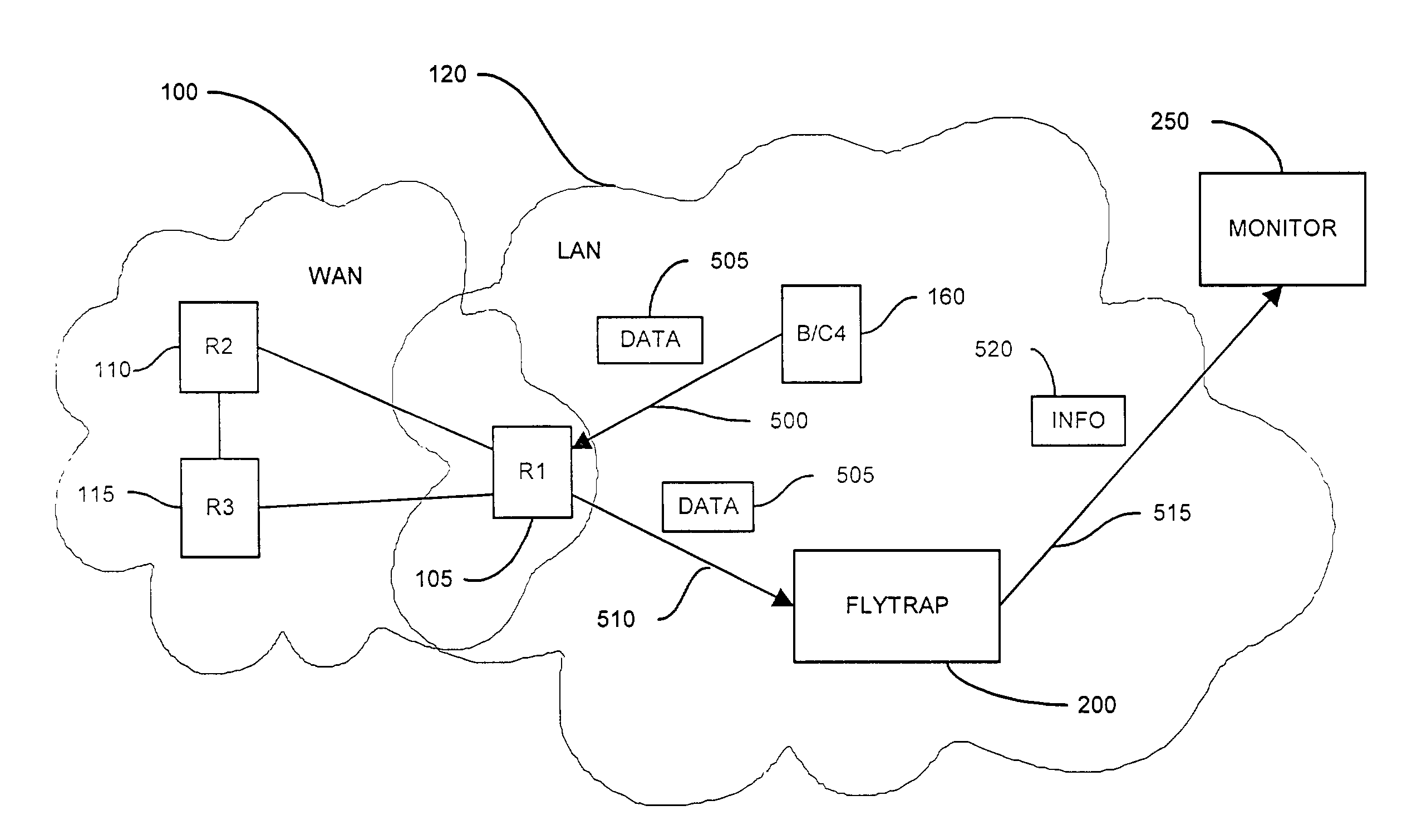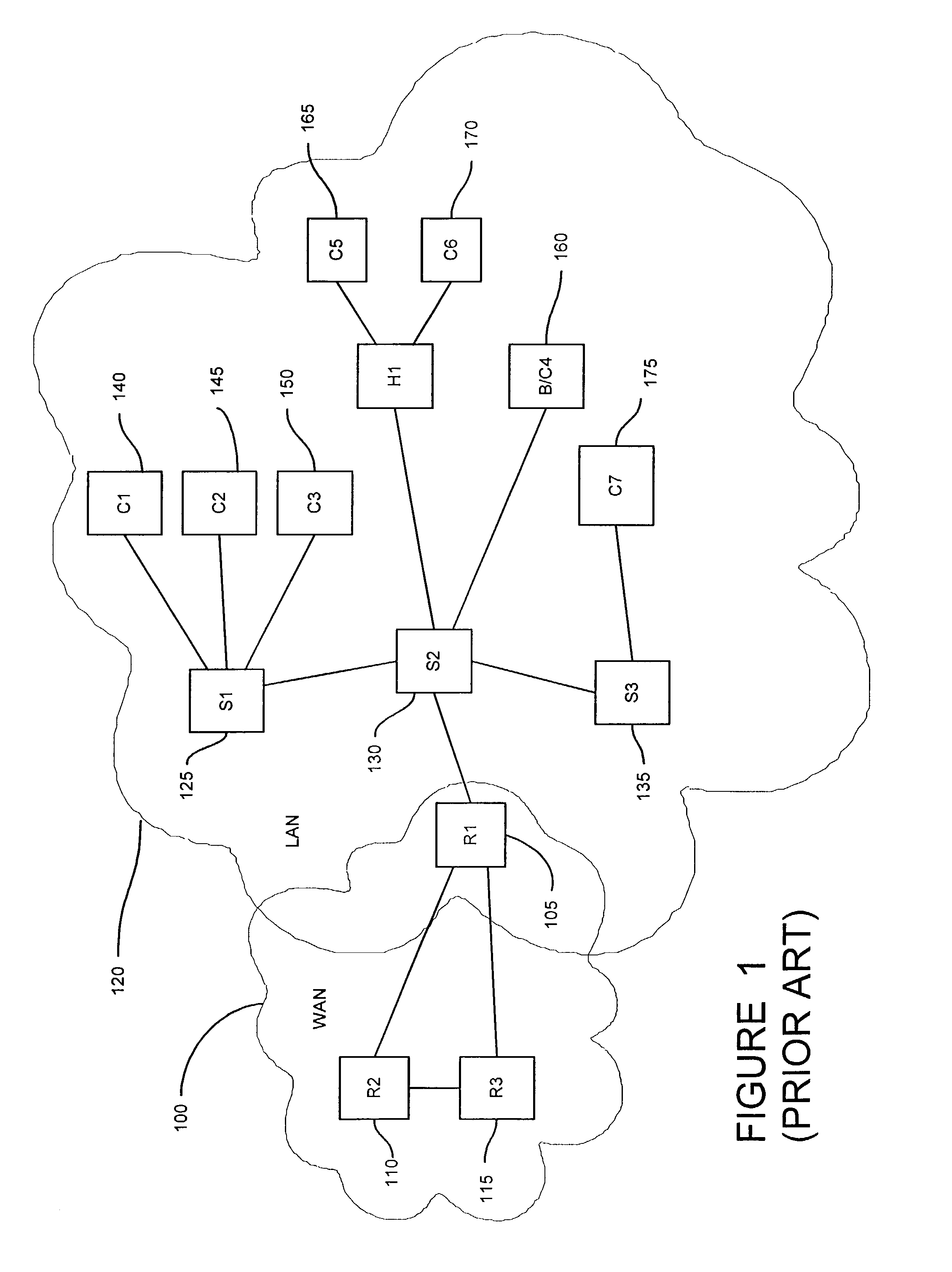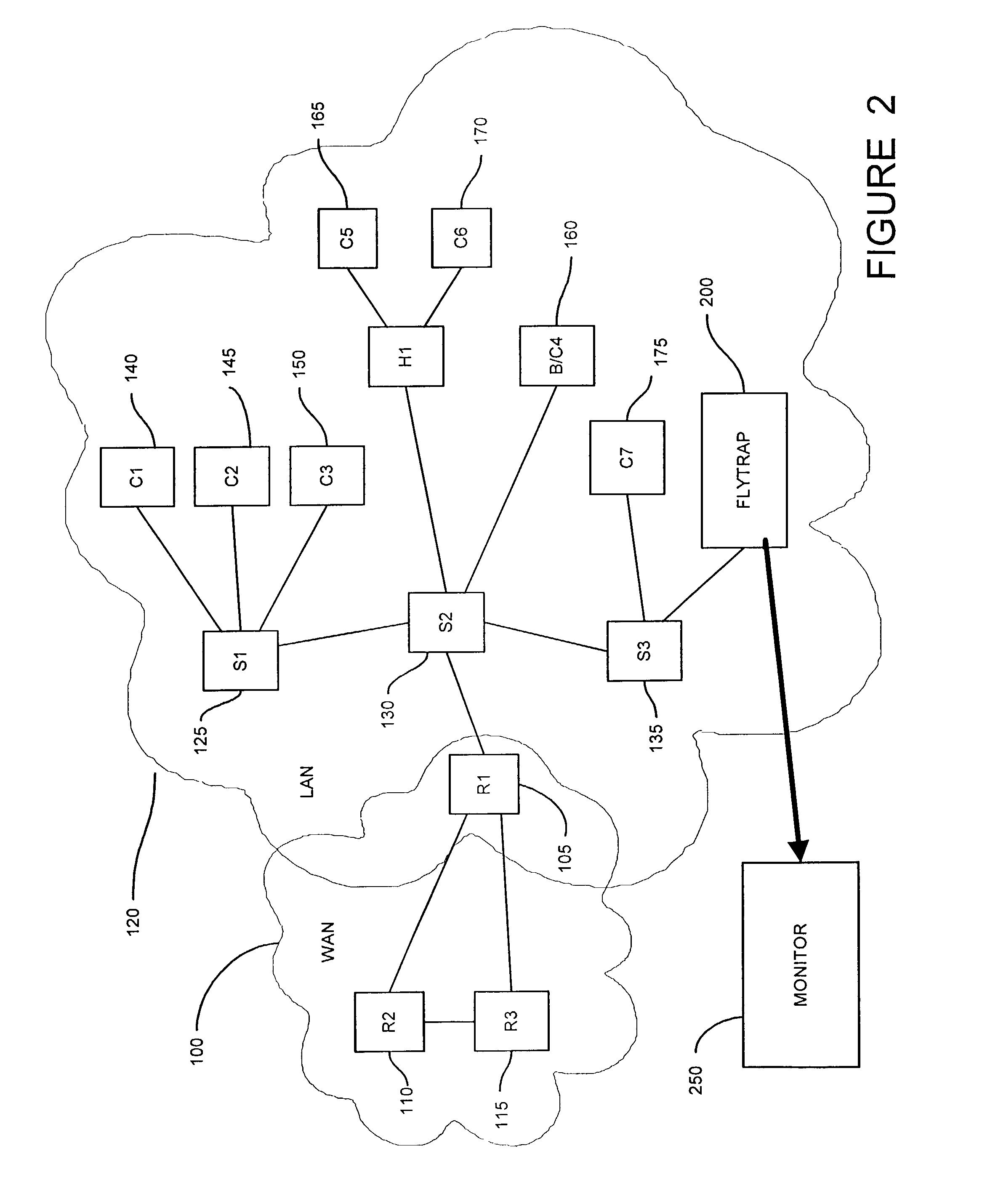Method and apparatus for capturing and filtering datagrams for network security monitoring
a network security and datagram technology, applied in the direction of program control, unauthorized memory use protection, instruments, etc., can solve the problems of unauthorized traffic saturating the internal corporate wan, the current network security technology does not provide comprehensive protection for computer networks, and it is difficult to build a system combining all four, so as to achieve limited routing functionality, high likelihood of reaching the monitor, and low cost
- Summary
- Abstract
- Description
- Claims
- Application Information
AI Technical Summary
Benefits of technology
Problems solved by technology
Method used
Image
Examples
Embodiment Construction
[0034]A security monitoring system in a computer network includes a packet sink with filtering and data analysis capabilities. The packet sink is a default route in the network for those packets addressed to destinations unknown to the network routers. The security monitoring system advertises itself as a low cost route to the network edges by peering with the network routers. Typically bad data traffic resulting from a network intrusion is sent to the network edges. This is due to the presumption on the part of routers that traffic with a destination address not matching any entry in the router forwarding tables is bound for a destination outside the network. Therefore, establishing a low cost default route to the network edges has a high probability of collecting bad data traffic when there is a network intrusion. The packet sink filters the received packets using at least of several characteristics including bandwidth and packet size. The packet sink also creates statistical summ...
PUM
 Login to View More
Login to View More Abstract
Description
Claims
Application Information
 Login to View More
Login to View More - R&D
- Intellectual Property
- Life Sciences
- Materials
- Tech Scout
- Unparalleled Data Quality
- Higher Quality Content
- 60% Fewer Hallucinations
Browse by: Latest US Patents, China's latest patents, Technical Efficacy Thesaurus, Application Domain, Technology Topic, Popular Technical Reports.
© 2025 PatSnap. All rights reserved.Legal|Privacy policy|Modern Slavery Act Transparency Statement|Sitemap|About US| Contact US: help@patsnap.com



